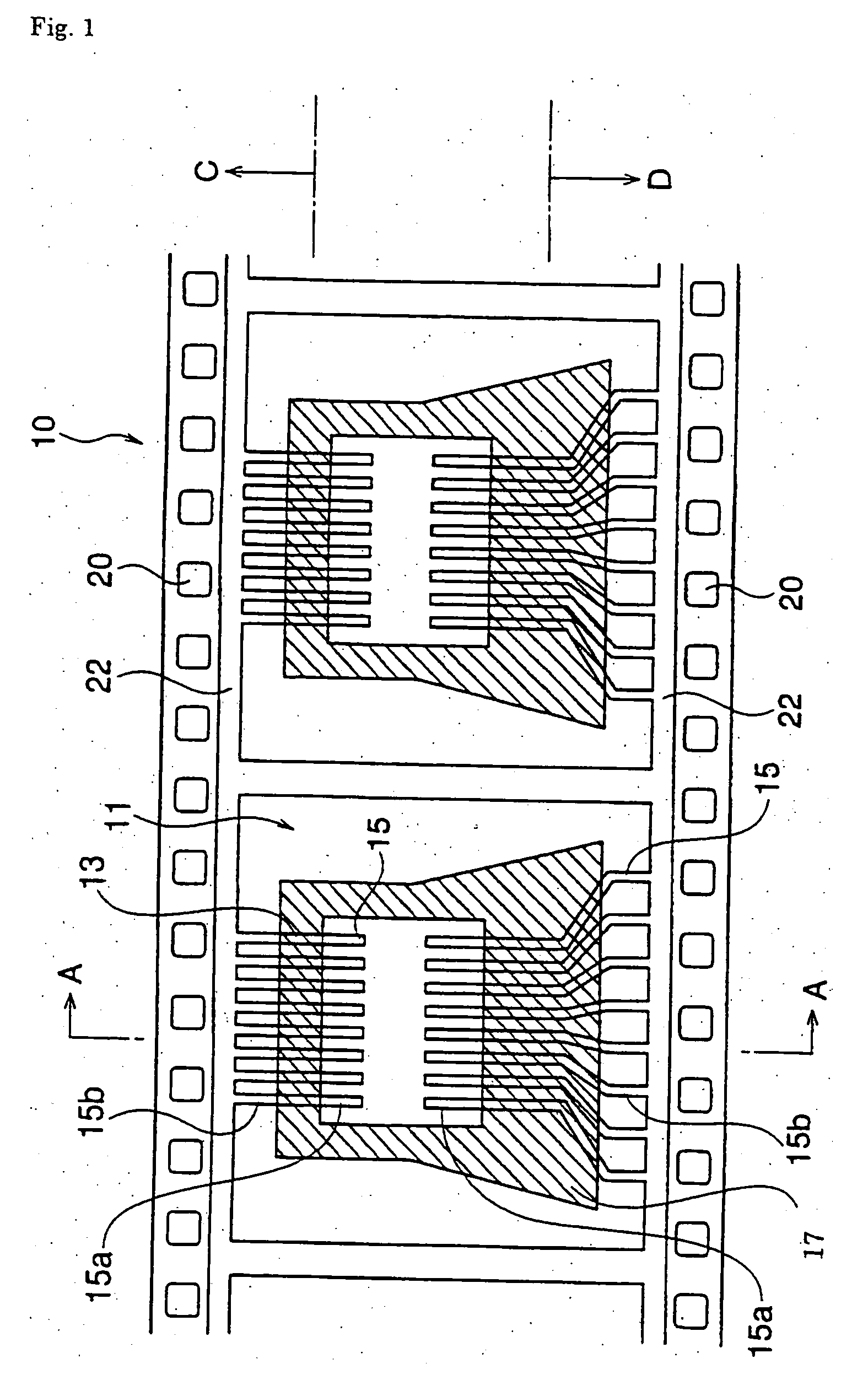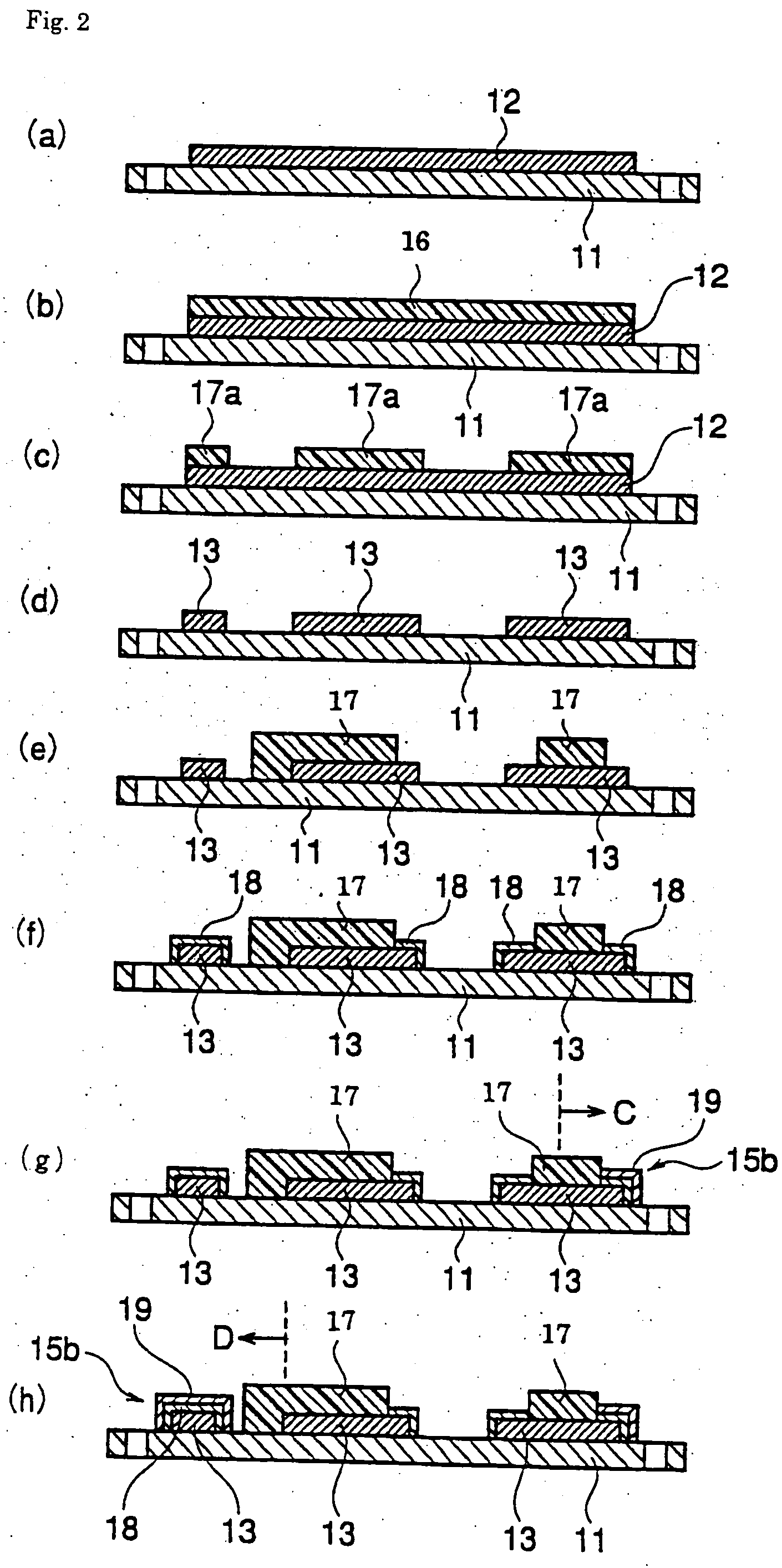Film carrier tape for mounting electronic devices thereon, production method thereof and plating apparatus
a film carrier tape and electronic device technology, applied in the direction of conductive pattern reinforcement, electrolysis components, semiconductor/solid-state device details, etc., can solve the problems of reducing the reliability of film carrier tapes, the melting point of tin-bismuth alloy did not have a constant value, and the content of bismuth is not uniform in the alloy deposit, so as to achieve stable bonding properties and stable bonding properties
- Summary
- Abstract
- Description
- Claims
- Application Information
AI Technical Summary
Benefits of technology
Problems solved by technology
Method used
Image
Examples
example 1
[0104] A polyimide film (UPILEX.RTM.-S available from UBE INDUSTRIES, LTD.), which was 50 .mu.m in average thickness, 48 mm in width and 120 m in length, was perforated to produce a number of sprocket holes in the vicinity of edge portions in the width direction.
[0105] Thereafter, as shown in FIG. 2(a), an electrodeposited copper foil having an average thickness of 25 .mu.m was bonded onto the polyimide film. The electrodeposited copper foil was coated with a photosensitive resin as shown in FIG. 2(b) and photoexposed. Developing the photoexposed resin produced a pattern as illustrated in FIG. 2(c).
[0106] The thus-formed pattern was used as a masking material while the electrodeposited copper foil was etched to produce a wiring pattern of copper as illustrated in FIG. 2(d). The masking material (photoexposed resin) was removed by alkali cleaning.
[0107] Then, an entire surface of the wiring pattern was coated with a solution of solder resist but the areas corresponding to inner and o...
PUM
| Property | Measurement | Unit |
|---|---|---|
| time | aaaaa | aaaaa |
| thickness | aaaaa | aaaaa |
| thickness | aaaaa | aaaaa |
Abstract
Description
Claims
Application Information
 Login to View More
Login to View More - R&D
- Intellectual Property
- Life Sciences
- Materials
- Tech Scout
- Unparalleled Data Quality
- Higher Quality Content
- 60% Fewer Hallucinations
Browse by: Latest US Patents, China's latest patents, Technical Efficacy Thesaurus, Application Domain, Technology Topic, Popular Technical Reports.
© 2025 PatSnap. All rights reserved.Legal|Privacy policy|Modern Slavery Act Transparency Statement|Sitemap|About US| Contact US: help@patsnap.com



